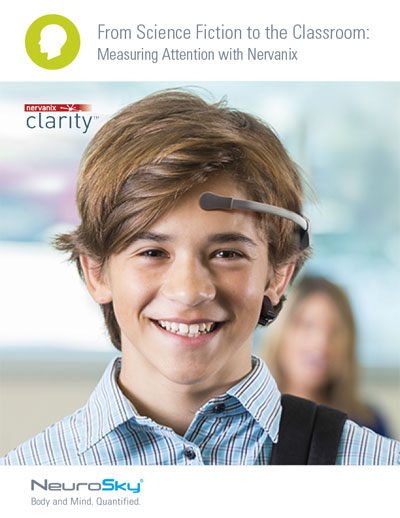In our previous blog, we emphasized how BCI has been traditionally applied to control scenarios. We also pointed out that consumer BCI loses significant control granularity as a trade-off in order to meet consumer requirements for price, ease-of-use, aesthetic design and mobility. Its value proposition as a precise controller peripheral is weakened through this sacrifice as it becomes relegated to taking on course control tasks. If that were not enough, BCI sometimes gets a bad rap from the entertainment industry. Take video gaming, for example. Some have the opinion that BCI is “too slow” for gamers and impacts the speed and flow of the game. It takes users time to properly prepare themselves to enter into a certain mental state, slamming the brake pedal down on the action and intensity of the game. Controlling mental states can also get pretty tiring over the course of a particularly long gaming session.
Consumer BCIs traditional use case (control / telepathy) has limited its true potential for entertainment uses. Part of the mission of consumer BCI companies is to educate the market about this misconception in order to expand the growth and use of BCIs in toys, gaming, music, art, theatre, film and television.
In the BCI world, the counter-part to control is monitoring. In monitoring, the user is simply engaged with the entertainment media and not attempting to consciously control any mental states. In fact, some algorithms do not even work well in control applications simply because they cannot be adequately controlled (try to create a drowsy feeling, for instance). Algorithms such as these work best in monitoring situations. By applying monitoring to the BCI experience, the player or viewer engages naturally with the media as if in a non-BCI experience. In this way, BCI overcomes much of the negative criticism attributed to its influences during the engagement:
- It no longer slows down the experience
- It does not tire the player
Monitoring can be used in two primary ways:
- Real-time: utilize the data as a real-time feedback mechanism (neurofeedback) in conjunction with the application to determine its next course of action
- dynamic / re-configurable media experiences
An example of this would be to monitor a player’s reaction to an intense event (e.g. excessive shooting or explosions) and adjust (up or down) the graphical intensity of the event (or change the venue entirely) if the player’s reaction does not align with the developer’s expectations.
- Post-process: capture the mental / emotional data of the player throughout the media engagement for post-processing and big data mining
- player / viewer profiling, classification and trending
- ranking media quality and experience
An example of this would be to analyze which media segments or entire media experiences (games, television, films, music) had the greatest impact to the user as a tool to enhance advertising, promotional messaging, user targeting, segmentation, and future product design.
Finally, combine control and monitor together and suddenly BCI becomes a more multi-purpose and powerful tool. Using control more sparingly and in more natural contexts (e.g. to cast a spell in order to exorcise demons) reduces any negative impacts on game speed and player fatigue. Meanwhile, simultaneously leveraging the monitoring benefits lends an additional secondary value to the overall experience and better justifies the rationale to use and develop BCI-enabled consumer products.
Stimulating a new dialogue on how consumer BCI can be applied in the world can only be accomplished by breaking the traditional view of BCI—as an expensive, non-mobile, difficult-to-use tool for control applications. Consumer BCI is so much more and its speed and quest to reach mass proliferation is only gated by its current form factor (wearability) barriers, which we will touch upon in future posts.



